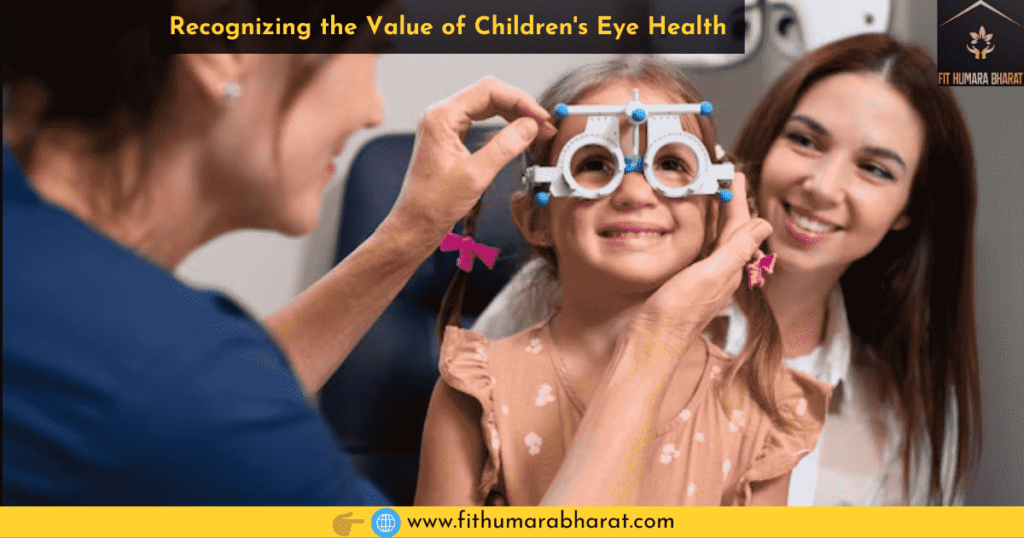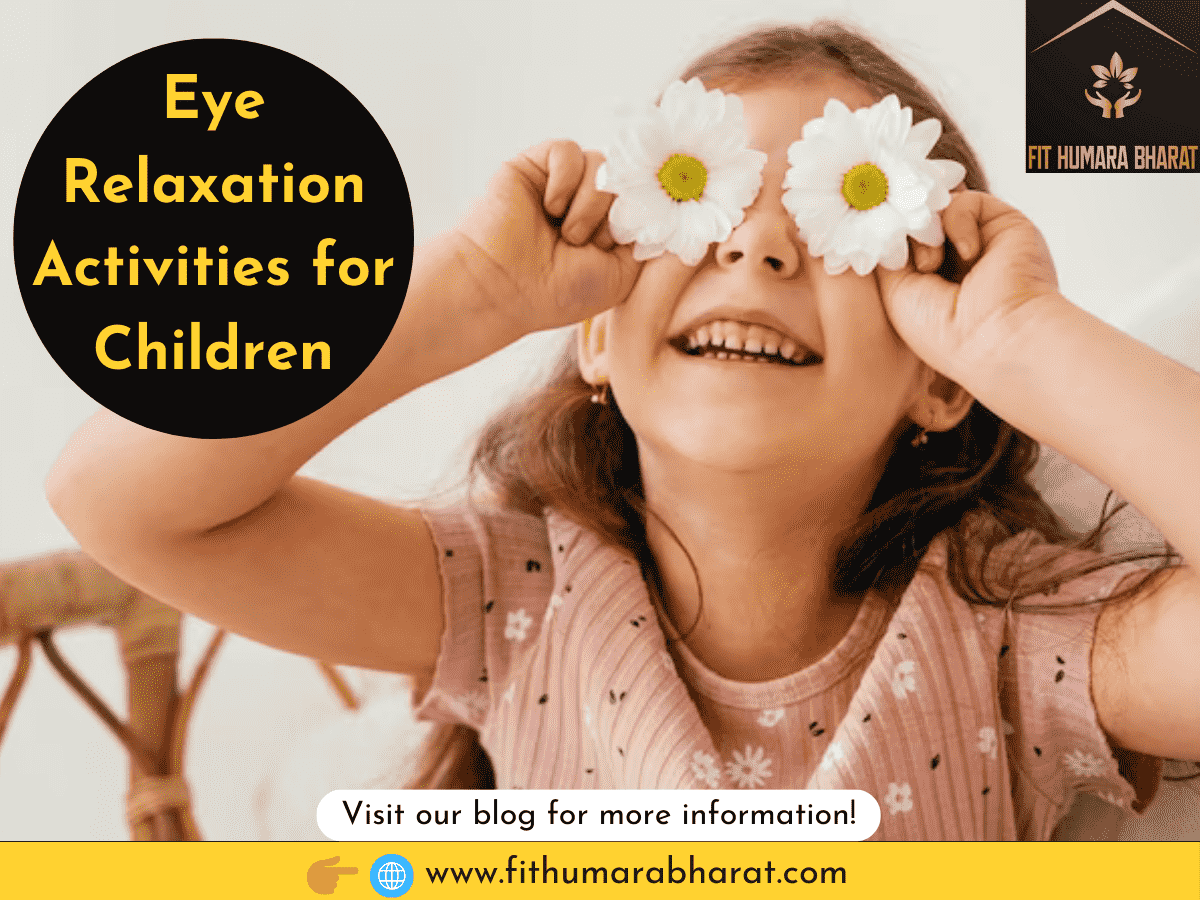In the digital era children are exposed to screens more and more, which contributes to an increase in eye conditions like myopia. Parents should concern about their child’s eye health, parents regularly look for solutions to decrease eye damage and, in some situations, even reduce their need for glasses.
We’ll look at a variety of eye relaxation techniques in this broad tutorial, which should help kids become less dependent on their glasses.
Recognizing the Value of Children’s Eye Health
Prior to getting into particular activities, it’s essential to know why it’s so crucial for kids to have good eye health. Since children’s eyes are still growing, prolonged use of books, computers, or other close-up activities may cause eye strain that might result in myopia or other vision problems. Early adoption of proper eye care practices has a significant long-term influence on a child’s visual health.

Exercise 1: 20-20-20 Rule
The easiest and most capable exercises to reduce eye damage are the 20-20-20 Rule. It encourages your children to take a break from close-up activities every 20 minutes and stare at something 20 feet away for at least 20 seconds. By concentrating on nearby things continuously, eye tiredness may be reduced with the use of this exercise.
Exercise 2: Exercises for Blinking:
Blinking often is a natural technique to maintain moisture in the eyes and lessen dryness, which is prevalent after extended screen time. In order to maintain the tear film and avoid pain in their eyes, teach your youngster to blink their eyes deliberately every few seconds. By using blinking in different tasks, you may turn it into an enjoyable game.
Exercise 3: Technique of Palming:
Using the palms of your hands to cover your closed eyes is known as the palming method. It is a relaxing technique. Tell your kid to choose a comfortable seat, shut their eyes, and cover them with their hands without pressing. This produces a cozy, gloomy atmosphere that encourages rest. For a few minutes, have your youngster practice palming while concentrating on deep breathing.
Exercise 4: Focusing Near-Far:
The eye muscles become more flexible with this workout. Ask your youngster to concentrate for a short while on a tiny item, like a pen, held at arm’s length. After that, tell them to focus their attention on a far-off object for a short while. Do this many times over. This activity improves the capacity of the eyes to distinguish between close and vast distances.
Exercise 5: Rolling Your Eyes
A simple workout that may be enjoyable and good for your eye muscles is eye-rolling. Give your youngster a few seconds to turn their eyes clockwise, then anticlockwise. This action improves the flexibility and strength of the eye muscles.
Exercise 6: Altering Your Focus:
Holding a finger around six inches away from your child’s face and gradually moving it further away can help them practice attention shifting. As the finger moves, instruct them to keep their attention on it, testing their ability to adjust their eye muscles to varied focal lengths. You may use this everyday workout to help improve your eye coordination.
Workout 7: Sunning:
It needs natural light to maintain healthy eyes. When you sunbathe, with your closed eyelids face the sun, letting the light and heat pass through. Instead of staring straight at the sun suggest your children to enjoy the soft sunshine. It is possible to reduce eye strain and promote relaxation by doing this exercise for a few minutes each day.
Exercise 8: Games of Visual Memory:
For improving kid’s visual and cognitive abilities you should play games of visual memory. Encourage memory-based games and puzzles that require pattern recognition and recall, such as memory card games.
Exercise 9: Screen Distance Awareness:
Encourage children to maintain an appropriate distance from screens. The ideal distance is about an arm’s length away, and screens should be at eye level. This helps prevent eye strain and promotes good posture.
Exercise 10:.Limiting Screen Time:
Establish guidelines for screen time, ensuring that children have breaks between prolonged use. Implementing screen-free hours and encouraging alternative activities, such as reading physical books or engaging in creative play, contributes to overall eye health.
Cutting Down on Glasses Dependency:
Even though these exercises might aid with eye relaxation, it’s important to remember that they might not altogether remove the need for glasses, mainly if there is an underlying vision issue. However, they may improve general eye health and work in combination with other vision-improving methods. It’s important to speak with an eye care specialist to figure out the best course of action for your child’s unique requirements.
1. Outdoor Activities: – Give confidence to your children to play outside more often and to take part in activities that call for peripheral vision. Outdoors, a variety of visual stimuli and natural light support good eye health.
2. Balanced Diet: – Make sure your child’s diet includes foods high in nutrients like vitamins A, C, and E that are good for eye health. Berries, leafy greens, and carrots are a few visually appealing foods.
3. Frequent Eye Check-ups: – Arrange for your kid to get frequent eye exams so that you can keep an eye on their eyesight and take quick care of any problems. For any questions about your child’s eyesight or to make sure their eyes are growing correctly, get in touch with an optometrist who specializes in pediatric eye care. Vision issues may be prevented from becoming worse with early identification and treatment.
Regular eye exams are crucial to keeping an eye on your child’s eyesight and identifying any problems early. A mix of lifestyle modifications, frequent examinations, and eye workouts is used to promote good vision in youngsters. These exercises should be done as part of a comprehensive eye care regimen, even though they might help calm the eyes and lessen the need for glasses. Your child’s long-term eye health and well-being may be enhanced by you establishing healthy eye care practices early on.
Thank you🙏
- The Impact of Providing Vision Screening and Free Eyeglasses on Academic Outcomes: Evidence from a Randomized Trial in Title I Elementary Schools in Florida
- Eye Exercises Enhance Accuracy and Letter Recognition, but Not Reaction Time, in a Modified Rapid Serial Visual Presentation Task
- Does Performing the Chinese Eye Exercises Help Protect Children’s Vision? – New Evidence from Primary Schools in Rural Northwestern China
- Early Intervention and Nonpharmacological Therapy of Myopia in Young Adults
- Digital Eye Strain- A Comprehensive Review

